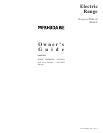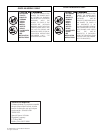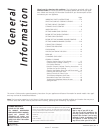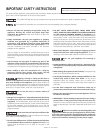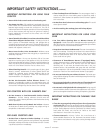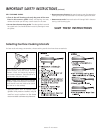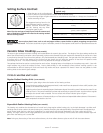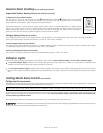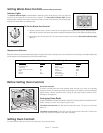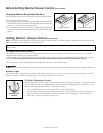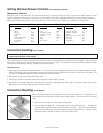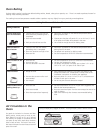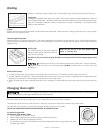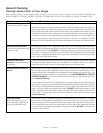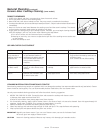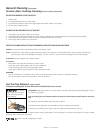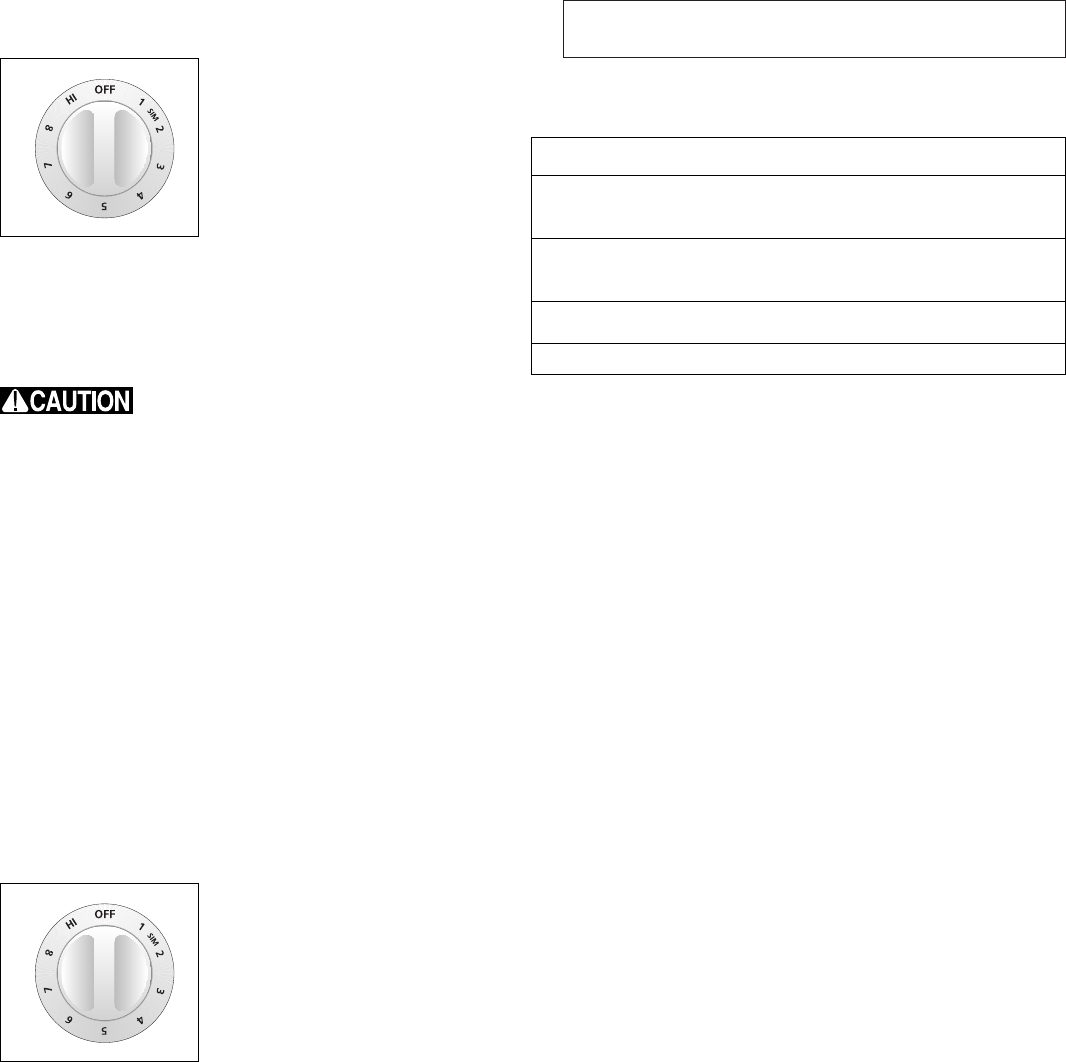
General 5 information
Setting Surface Controls
1. Place the pan on the surface element.
2. Push in and turn the surface element control knob to desired setting.
3. The surface signal light will glow when one or more elements are turned on. Always turn the element off
before removing the pan.
The suggested settings found in the
chart beside are based on cooking in
medium thickness aluminum pans
with lids. Settings may vary when
using other types of pans.
Note: The size and type of utensil used, and the amount and
type of food being cooked will influence the setting needed
for best cooking results.
Do not place plastic items such as salt and pepper shakers, spoon holders or plastic wrappings on top of the
cooktop when it is in use. These items could melt or ignite. Potholders, towels or wood spoons could catch fire if placed too close to the
element.
Ceramic Glass Cooktop (some models)
The ceramic-glass cooktop has electric heating coils located below the ceramic glass surface. The design of the glass cooktop outlines the
area of the surface heating unit below. Most importantly, make sure the diameter of the pan matches the diameter of the surface unit. Heat
is transferred up through the surface of the cooktop. Only flat-bottomed pans should be used. The type and size of the cookware, number
of surface units in use and the settings of the surface units are factors that will affect the amount of heat that will spread to areas
surrounding the units. The areas surrounding the units may become hot enough to cause burns.
The cooktop should not be used as a cutting board or work surface. Dropping heavy or hard objects on the cooktop may crack it. Pans with
rough bottoms may scratch the cooktop surface. Placing foods directly on the smoothtop surface (without cooking utensils) is not
recommended as difficult cleaning will result and foods may smoke and cause a potential fire hazard. Never use the griddle or similar
cooking sheet on the ceramic glass cooktop.
TYPES OF HEATING UNITS USED
Regular Radiant Heating Units (some models)
The ceramic glass design shows the location of the heating surfaces.
Control knobs are used to set the heat power levels; knobs need first to be pressed in when at OFF position, then
turned to the desired heat settings.
A glowing red surface unit extending beyond the bottom edge of the cooking utensil indicates the utensil is too
small for the unit. The control knob does not have to be set exactly on a particular mark. Use the marks as a guide
and adjust the control knob as needed. The hot surface and surface indicator lights will glow.
Note: A built-in protector will automatically turn off the radiant and expandable radiant elements if the ceramic-
glass temperature exceeds the set limit.
Expandable Radiant Heating Units (some models)
This heating unit combines the characteristics of a small and a large regular radiant heating unit. Its principal advantage is to allow small
and large utensils to be used on the same heating unit, therefore increasing the cooktop flexibility. Heat power levels are adjusted by a
special control knob that has a dual set of graduations; for small utensils use the small graduations; the inner surface only will be
heating. For larger utensils use the larger graduations; the whole surface will be heating. The hot surface and surface indicator lights will
glow when the heating unit is turned ON.
Note: During any heat setting of the outer radiant element, the inner radiant element cycles on and off with the outer element.
NOTE: All knobs shown in this owner's Guide are
typical only
.
Setting Type of cooking
MAX (HI) Start most foods, bring water to a boil, pan
broiling
MEDIUM (5) Maintain a slow boil, thicken sauces and
gravies, steam vegetables.
MEDIUM - LOW (2-4) Keep food cooking, poach, stew.
MIN (1-SIM) Keep warm, melt, simmer.



